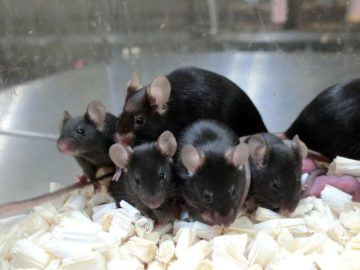Shi En Kim in Smithsonian:
 Biologist Teruhiko Wakayama envisions that one day, humans could populate other planets and seed new civilizations with animal sperm and egg cells they bring from Earth. Expanding humanity’s footprint into deep space will necessitate that humans ship out “Noah’s Arks” of this genetic material, each batch of cells a delegate of Earth’s biodiversity.
Biologist Teruhiko Wakayama envisions that one day, humans could populate other planets and seed new civilizations with animal sperm and egg cells they bring from Earth. Expanding humanity’s footprint into deep space will necessitate that humans ship out “Noah’s Arks” of this genetic material, each batch of cells a delegate of Earth’s biodiversity.
But before Wakayama’s vision becomes reality, first comes the task of verifying that reproductive cells can survive long journeys through space. Outside of Earth’s magnetic shield, radiation is 50 to several thousand times higher than back on Earth, and it can potentially damage cellular DNA. Now, Wakayama’s latest research, published this June in Science Advances, has made a promising inroad into prepping genetic material for interstellar transport: His team has found that mice sperm can indeed stay viable in space aboard the International Space Station (ISS) for up to six years—if they are freeze-dried beforehand
“It’s a very interesting paper,” says Ulrike Luderer, a reproductive toxicologist at University of California, Irvine who wasn’t involved in the study. “It’s the first time that any form of mammalian sperm have been in space for that length of time—nearly six years, the longest exposure.” To carry out the freeze-drying process, the researchers froze sperm from 65 mice with liquid nitrogen at a temperature of negative 320 degrees Fahrenheit. Then, they exposed their frozen cells to a vacuum environment to quickly remove all water. “The sperm became powder [resembling] instant coffee,” writes Wakayama, who researches at Japan’s University of Yamanashi.
More here.
